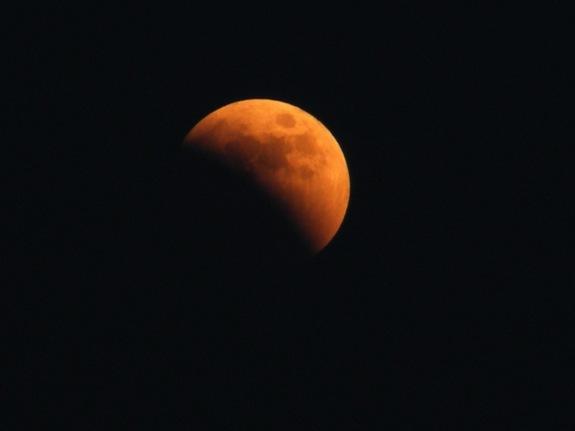April 15, 2014
CAPE CANAVERAL: Night owls and early risers in North America can watch a rare celestial event on Tuesday as the Earth's sunset-hued shadow falls across the moon, shifting its colour to bright orange, depending on local weather conditions.

Total Lunar Eclipse, April 15, 2014
April 15, 2014
CAPE CANAVERAL: Night owls and early risers in North America can watch a rare celestial event on Tuesday as the Earth's sunset-hued shadow falls across the moon, shifting its colour to bright orange, depending on local weather conditions.

Total Lunar Eclipse, April 15, 2014
The lunar eclipse will unfold over three hours beginning at 1.58am EDT when the moon begins moving into Earth's shadow. A little more than an hour later, the moon will be fully eclipsed and shrouded in an orange, red or brown glow.
Precise coloring depends primarily on the amount of volcanic ash and other aerosols floating in the atmosphere, SpaceWeather.com reports.
The celestial show will be over by 5.33am, according to astronomers at the University of Texas' McDonald Observatory.
Eclipses occurs two or three times per year when the sun, Earth and the full moon line up so that the moon passes through Earth's shadow.
Tuesday's eclipse will be the last full lunar eclipse visible from the United States until 2019, NASA said.
Weather permitting; the eclipse will be visible from most of the country, with the exception of New England and Alaska.
Alaskans can get a view of the moon rising already partly eclipsed. From New England, the moon sets before the eclipse ends.
The eclipse also will be visible from Australia, New Zealand and all of the Americas.
NASA plans live coverage of the eclipse on NASA TV, the NASA.gov website and on its social media accounts. Coverage begins at 2am EDT.
Other websites offering live webcasts and commentary of the eclipse includes Slooh.com and the Coca-Cola Science Center at Columbus State University in Georgia.
Courteay: Reuters
















































































































